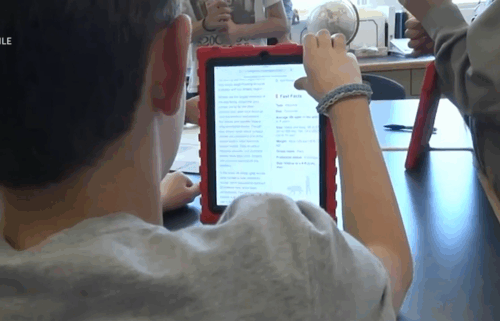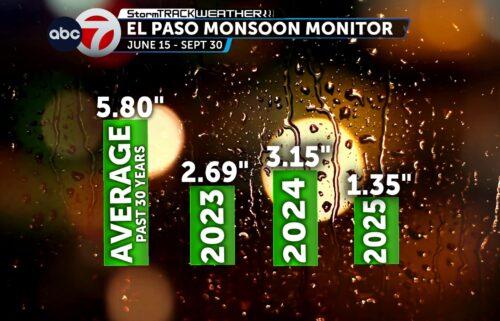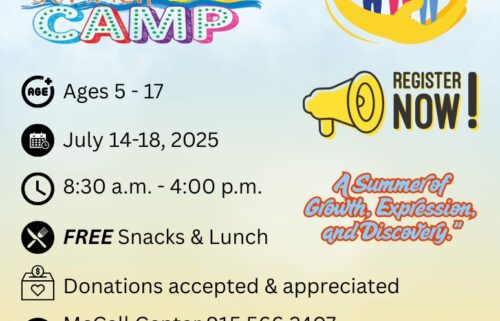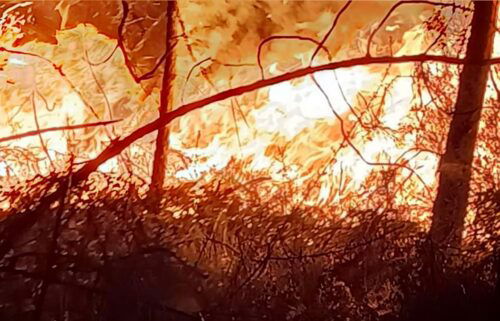Daniel Villegas retrial: Case tested by time
UPDATE:
One of the survivors in a double murder 25 years ago said he at one time was threatened with a capital murder charge in the case.
Juan Medina — one of two survivors who was shot at back in 1993 — testified during the third day of Daniel Villegas’ latest trial.
Medina said he was once accused of killing his friends — Armando “Mando” Lazo and Robert “Bobby” England in 1993.
It was a crime that Villegas was convicted of during his second trial. He served 18 years in prison before an an appeals court overturned the verdict and ordered a new trial. His first trial ended in a mistrial.
Medina recalled that night 25 years ago. He remembered a car pulled up while he and his friends were helping England walk because he was drunk.
A car then returned and fired shots.
During cross-examination, Medina — who initially said seven shots were fired — said he wasn’t sure how many shots were fired or if it was the same car that came back.
He said it was hard to be clear because the adrenaline was running so high.
The prosecution asked if Medina knows John Mimbela, an El Paso businessman. Mimbela has become an advocate for Villegas’ defense and has largely bankrolled his defense.
Medina said he met Mimbela in 2012 and received a $5,000 loan from him because he had financial problems. He also said Mimbela gave him side jobs.
Judge Sam Medrano warned the prosecution about this line of questioning.
Throughout the third day of trial, the name of detective Al Marquez kept coming up. Medina and Villegas’ cousin — David Rangel — said Marquez had threatened them with capital murder charges in the case.
Rangel — who avoided eye contact with his cousin — testified that he had offered information to the police — that Villegas has admitted to him that he had shot and killed Lazo and England.
Marquez is not scheduled to testify, but defense attorney Joe Spencer said he has subpoenaed him.
ORIGINAL STORY:
Prosecutors, defense attorneys and jurors in the third trial of Daniel Villegas have a monumental task ahead of them: find the facts and memories that time has faded.
Tuesday during opening statements, a prosecutor told jurors that Villegas admitted, even boasted he had killed two teens — to his cousin, a group of girls, and even a jailhouse witness.
Defense attorney Joe Spencer said that talk was hearsay.
Spencer showed a graphic detailing his position: the State has no physical evidence, no firearm, no DNA or forensic evidence.
The packed courtroom is filled with Villegas’ family members and onlookers. Additional chairs were brought in to accommodate the crowd as Villegas, now a father of three, puts his future on the line after rejecting a last-minute offer for a plea agreement that would have sentenced him to time served. Villegas wants to clear his name, Spencer told ABC-7.
The Crime Alleged
Daniel Villegas admitted to shooting and killing Armando “Mando” Lazo and Robert “Bobby” England in 1993. Villegas claimed the confession was coerced by then-detective Al Marquez and recanted his story. His first trial ended in a hung jury on 1994, but in 1995 he was convicted. After serving 18 years in prison, his conviction was overturned on the basis of ineffective counsel.
Witness to the Shooting
Jurors heard tearful testimony from one of the four teenagers who were shot at in 1993.
Jessie Hernandez recounted the night in April when he, Juan Hernandez, Armando Lazo and Robert England walked home. He testified about a brief confrontation with a car they thought was Jessie’s cousin, who was supposed to give them a ride home. That car turned out to be someone else’s but words were exchanged. The people in that car, a 1972 Caprice according to Hernandez, returned. He described both Lazo and England screamed something into the car, then shots rang out. Hernandez told jurors he and Juan were nervous and in a fight-or-flight moment, ran and hid behind a dumpster. When they returned to look for their two friends, they found they’d been shot to death.
Hernandez testified then-detective Al Marquez picked him up from his home after Lazo’s funeral, took him into an interrogation room and accused him of killing Lazo. He described being so confused that he wondered if he actually had killed his friend.
Hernandez broke down when asked by Spencer during cross-examination if he shot his friends.
“I don’t feel like an adult,” Hernandez cried, “I’m a child again, frozen in time.”
Law Enforcement on the Stand
Two police officers who responded to the crime scene the day of the shooting took the stand. One of them was a crime scene technician.
Crime scene investigator Hector Hernandez testified he was initially unaware two victims were killed and focused on the area where Robert England’s body was found. He said he never went near the area where Lazo collapsed, in front of a home where a 911 call originated. He explained shell casings numbered throughout the crime scene do not show the sequence of when the shots were fired.
Defense attorney Joe Spencer reminded the courtroom how long it’s been since the shooting when he told Hernandez, “as you well know, memory fades with time.” Spencer questioned why Hernandez did not do a thorough investigation recording all the evidence needed to recover information in case of a future trial, like one 25 years later.
Prosecutors also called Gerald Humphrew, a retired police officer. Also a crime scene technician, he reviewed the autopsies of Lazo and England and did not go to the scene. At this time, jurors were shown graphic photos of the victims’ bullet wounds. England was shot in the head, Lazo on the torso, head and arm. Humphrey testified the camera he used to record malfunctioned and evidence was lost.
Spencer pounced in efforts to discredit the witnesses by trying to prove they did shoddy work: Hernandez did not investigate one of the crime scenes, Humphrey was unable to produce 20 evidentiary photos because of a malfunctioning camera.
Trying a decades-old case
The challenges of trying a decades-old case are many, including faded memories and dead witnesses.
Prosecutors resorted to a highly unusual technique which a defense attorney called “overdramatic.” In order to present testimony from witnesses who are now dead, Prosecutor Denise Butterworth read the transcript from their previous testimony dating back to the 1990s. Another prosecutor would ask her questions, and Butterworth would answer giving information off the transcript. The testimony was from a couple who has since died. They lived in a house where one of the shooting victims, Lazo, crawled to after being shot, rang the doorbell, collapsed and died. The couple also called 911.
Prosecutors could call as many as 97 witnesses. The defense has 50 witnesses on their list.
Instructions for the Jury
Judge Sam Medrano indicated Tuesday’s proceedings would go unly until 4:30 p.m., but Wednesday’s and, if necessary, Thursday’s would continue until 6 p.m.
Before sending jurors away, he instructed them to avoid any coverage of this trial on newspapers, online or television. He warned them not to discuss the case with anyone, not even among themselves but he encouraged them to talk to each other.
“Get to know each other,” he told them before saying “Get some rest.”



